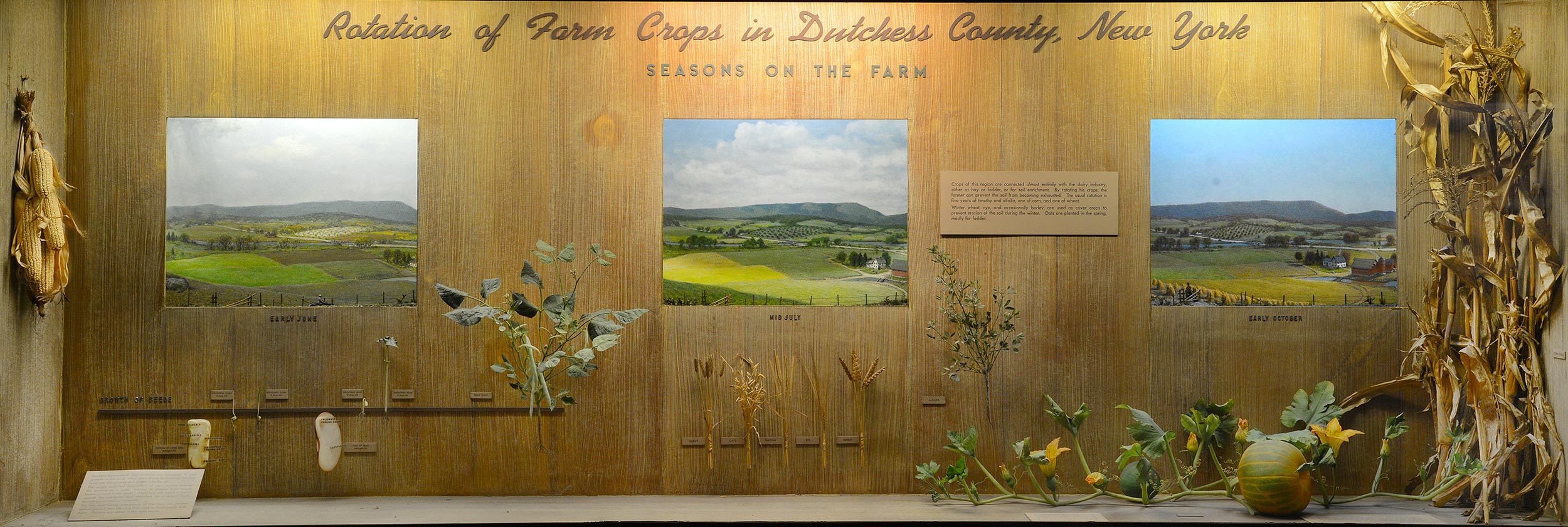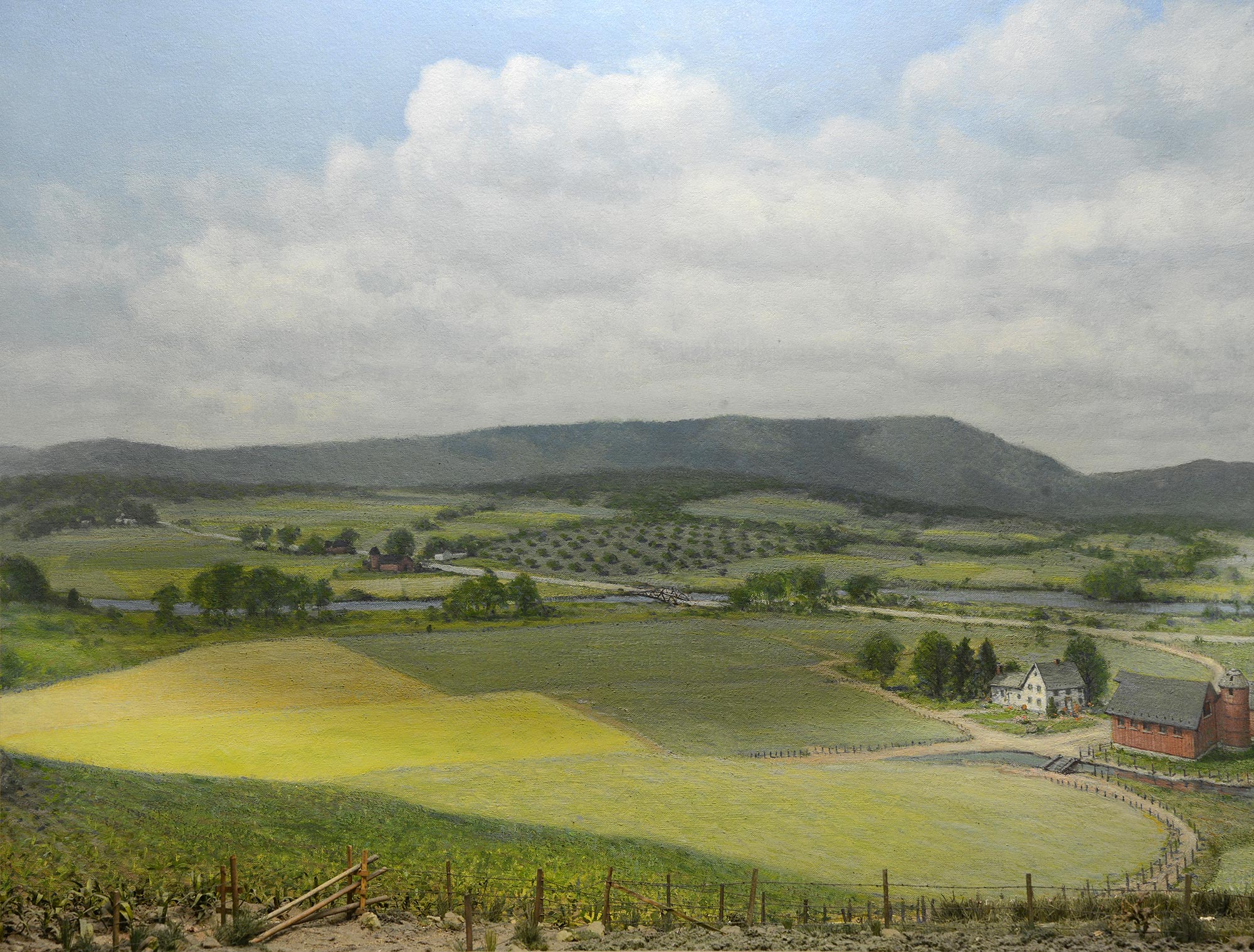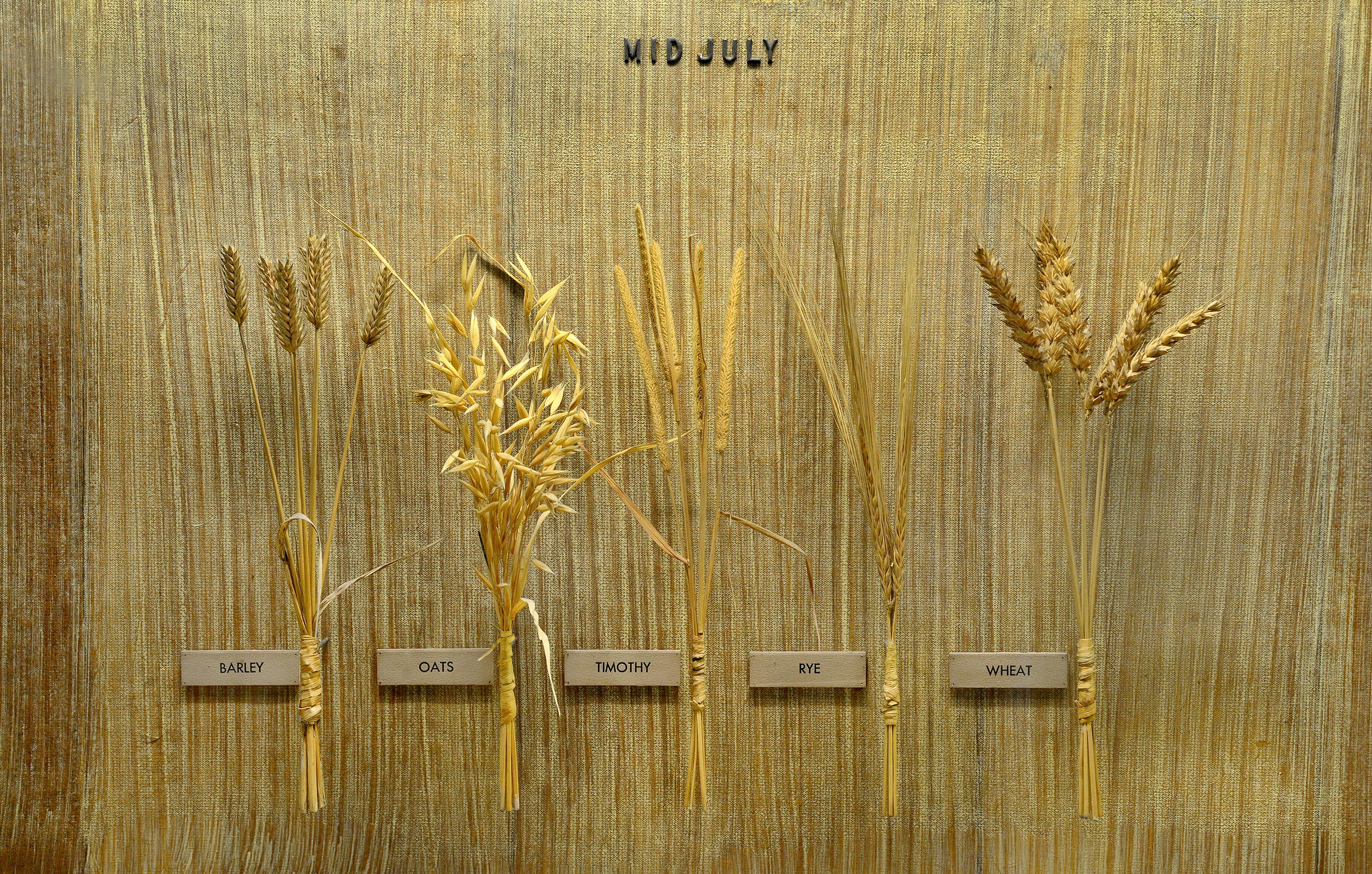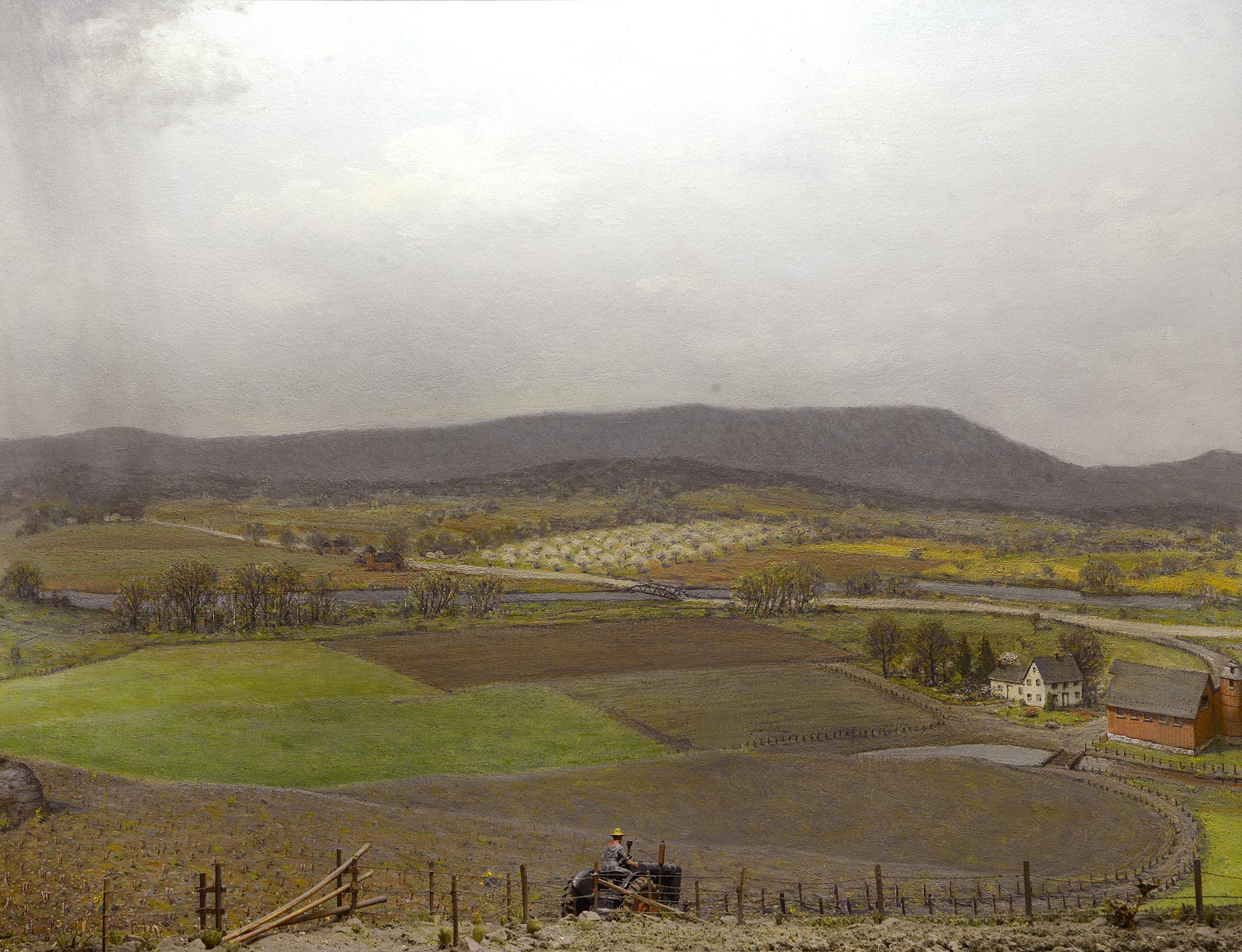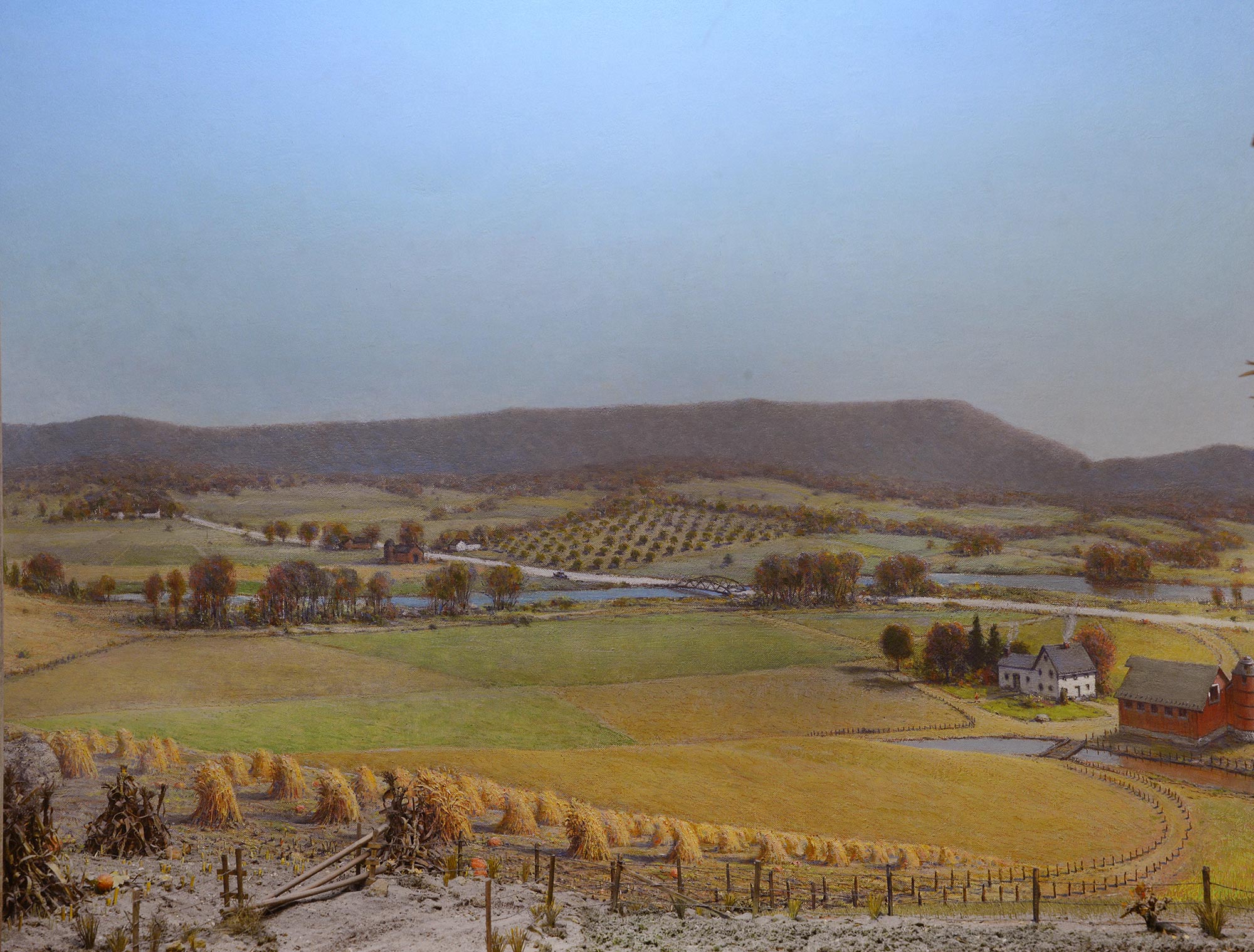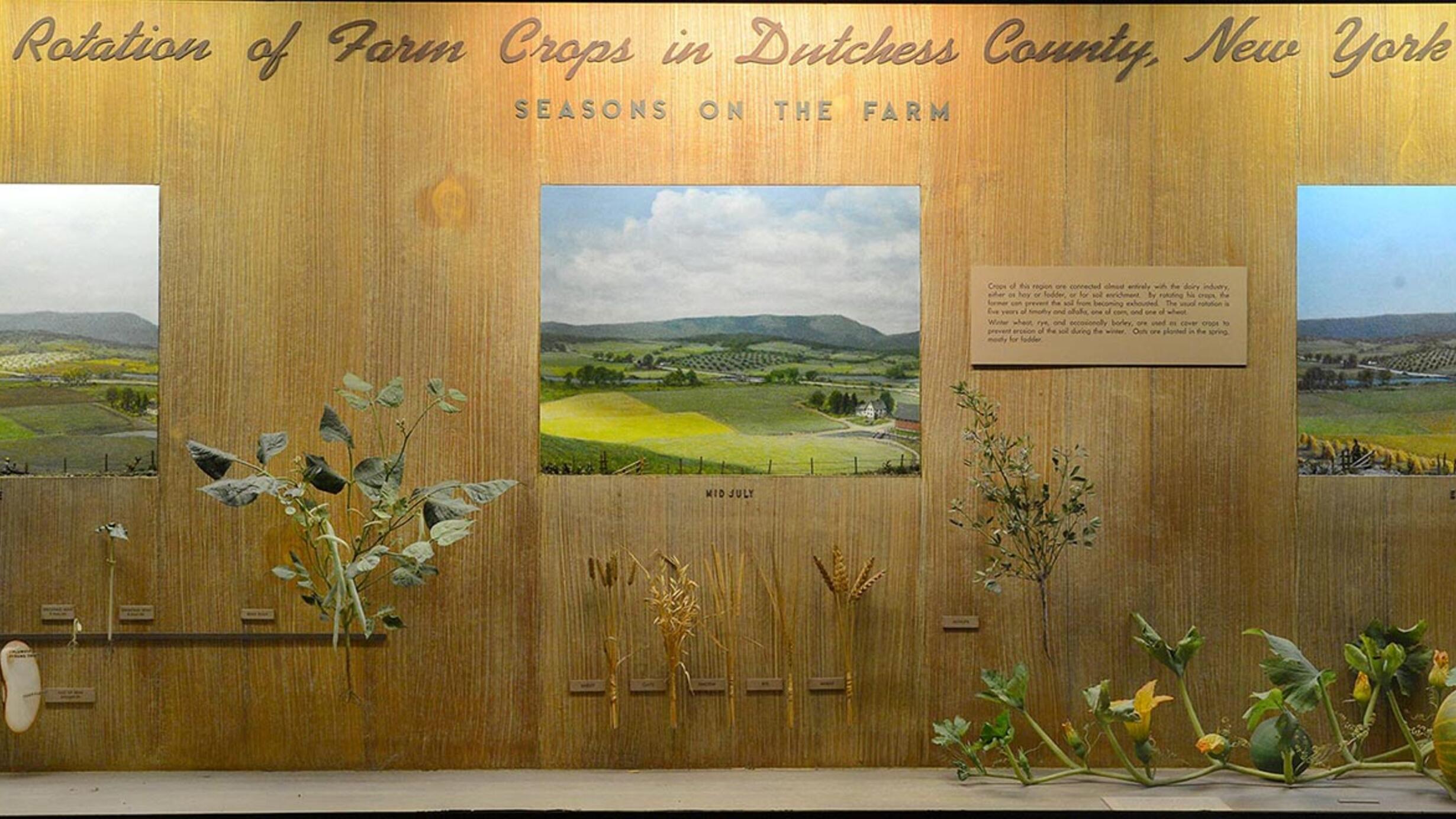Early June: Growth of Seeds
Suitable temperature and moisture are necessary to start growth in the speed, which soon bursts its covering, sending roots into the ground and a steam into the air.
The single seed-leaf (cotyledon) of corn pushes through the ground as a spear, leaving its reserve food supply below ground in the grain. Hard and soft starch is stored outside the cotyledon and absorbed by a special layer (scutellum) containing enzymes.
The two seed-leaves (cotyledons) of the bean are hoisted above ground, thus carrying their reserve food supply with them. Proteins are stored in the seed leaves.
Section of corn seed enlarged X12
Half of bean enlarged X8
Hard starch
Soft starch
Scutellum
Cotyledon (2) coleoptile (young shoot) primary root
Plumule (young shoot)
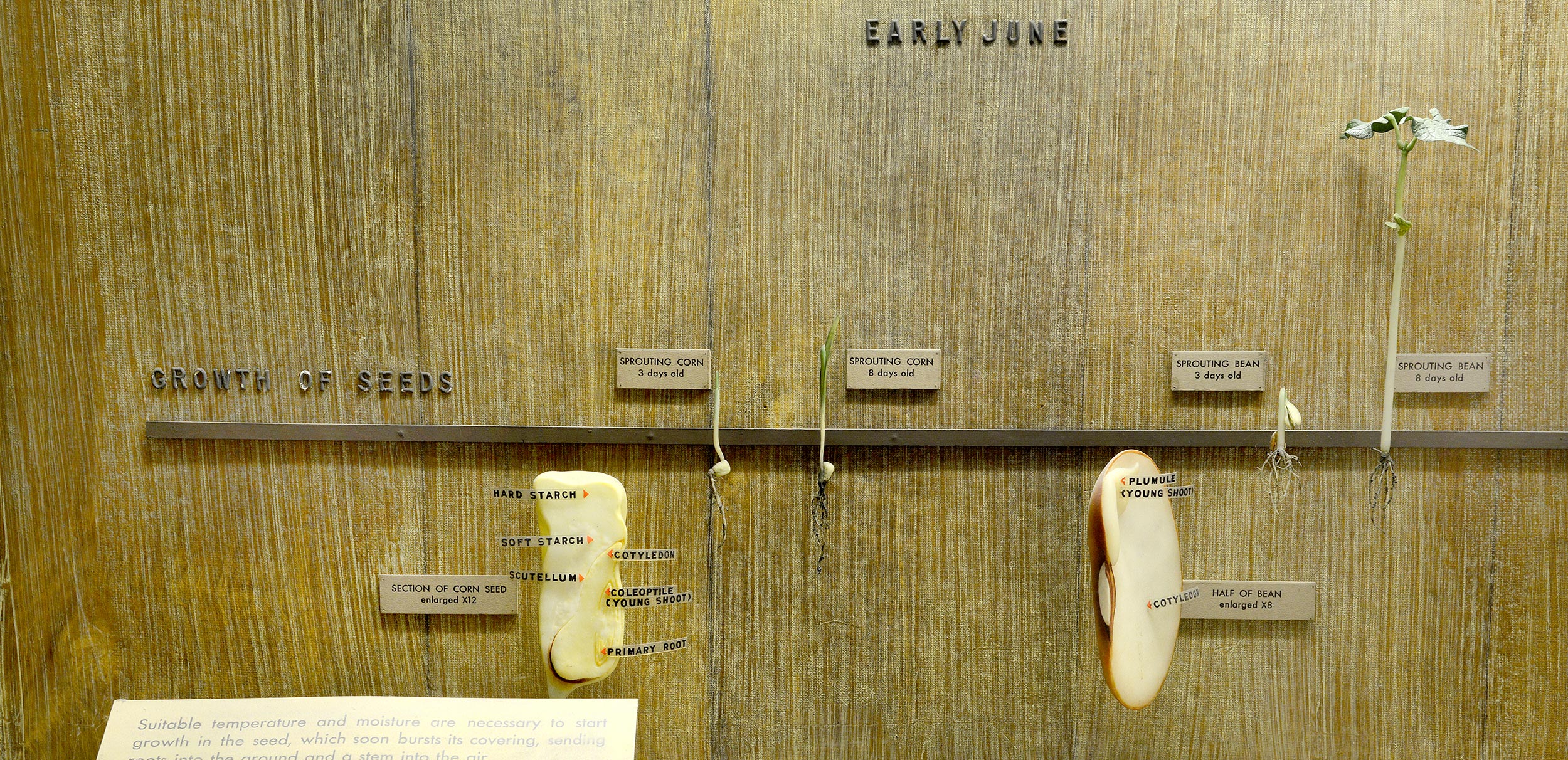
Early October: Pumpkin and Corn
Four major pests of the pumpkin are the Squash Bug which sucks the sap from the underside of the leaves, the Spotted Cucumber Beetle and the Striped Cucumber Beetle which feed on the leaves, and the Squash Borer Moth, the larva of which bores into the base of the stems.
Pumpkins are often planted among the corn and are more readily seen after the corn has been cut. Pollen-bearing flowers (male) are on separate plants from the pistillate flowers (female) which produce pumpkins. Pollen is carried by insects from one flower to another to bring about fertilization.
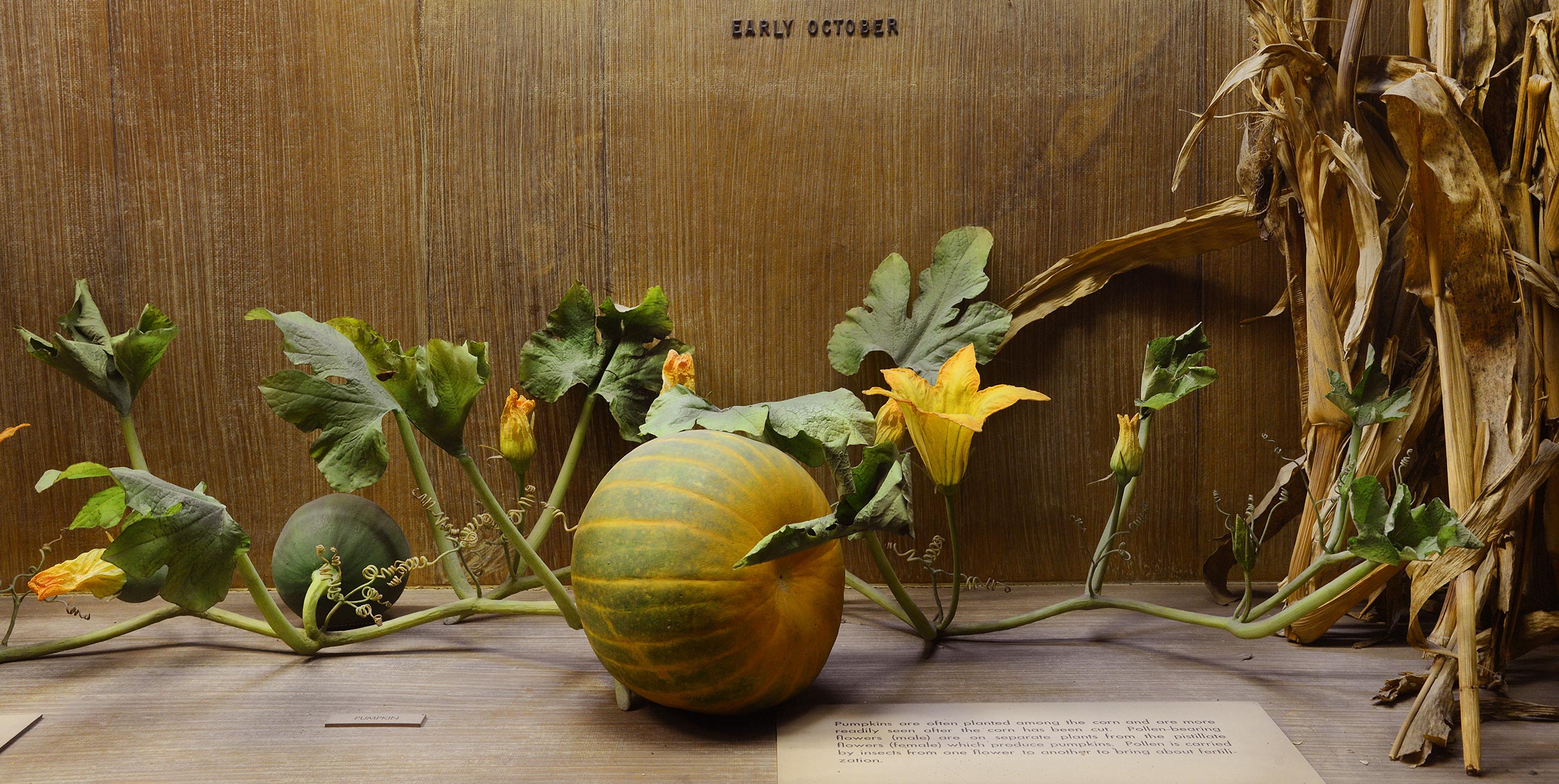
Main Text
Crops of this region are connected almost entirely with the dairy industry, either as fodder or for soil enrichment. By rotating his crops, the farmer can prevent the soil from becoming exhausted. The usual rotation is two years of clover, or alfalfa, one of hay, and one of corn.
Winter wheat and barley are used as cover crops to reduce erosion of the soil during the winter. Oats are planted in the spring mostly for fodder.
Rotation of Farm Crops in Dutchess County, New York
Part of Hall of New York State Environment.
